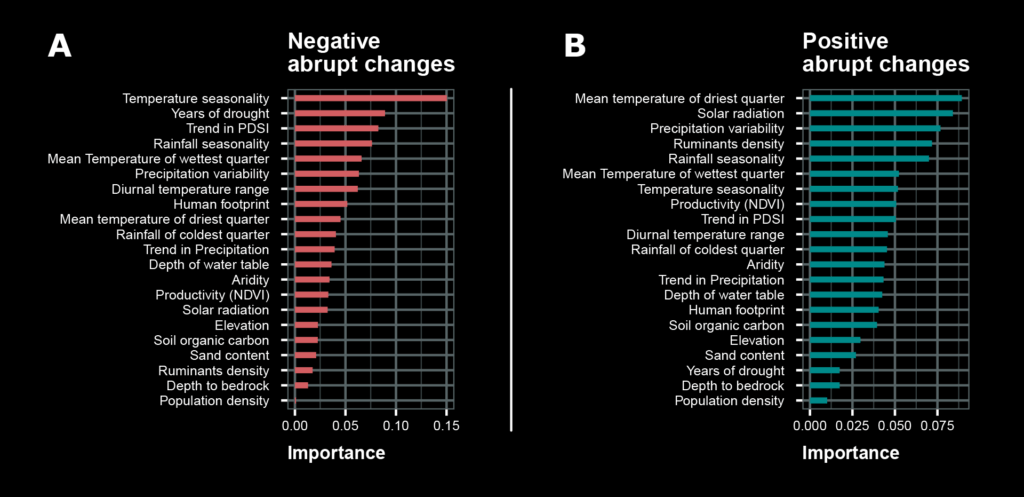Protecting these vulnerable ecosystems requires understanding how humans impact their resilience
Drylands are home to 2.1 billion people, and harbor some of the world’s rarest biodiversity. Globally, they are also highly sensitive to ecological changes under global change. New research shows that 50% of the changes in dryland ecosystem dynamics are abrupt shifts, which are characteristic of tipping point responses in ecological states. The prevalence of these abrupt shifts highlights concerns about resilience loss in these vulnerable ecosystems.
New research from ETH Zurich’s Crowther Lab and the University of Montpellier, CNRS shows that abrupt shifts in the productivity of drylands are happening rather extensively and depict hotspots of where abrupt shifts to a degraded productivity state and cold spots of where abrupt shifts to a restored productivity state are happening.
Using machine learning, the team of researchers was then able to study in the 40,000 natural dryland ecosystems around the world how climate change and human anthropogenic factors are affecting the resilience of global drylands.
The team was able to unveil potential drivers for abrupt shift accumulation. Ecosystems with greater rainfall seasonality were associated with abrupt shifts, whereby landscape went from abruptly from “green” to “brown”, indicating that potential desertification occurred. In contrast, less rainfall seasonality was found for positive abrupt shifts, meaning a change from a quick shift brown to greenness, and staying green.
This research was only possible because of the recent emergence of long-term temporal series of vegetation productivity available at the global scale. Dr. Vasilis Dakos, the final author of the study says, “More broadly, this study shows how we can estimate ecosystem responses and understand their resilience at a global scale based on remote sensing products.”
The research highlights that human presence may impede rapid recovery of vegetation in drylands, making dryland ecosystems less resilient. “Drylands are unique and very prone to exhibit drastic changes – and support 50% of the world’s livestock. To keep these ecosystems productive for the future, this research can be used as a management guide for the limits of human pressure under which restoration of vegetation will be most successful and for the conditions that make these systems most vulnerable,” says lead author Dr. Miguel Berdugo.
This study provides an atlas of potential sites that might be of interest to conduct such in situ observations, to learn further insights about the abrupt shifts in these vulnerable ecosystems, and guide how we can ensure drylands stay both resilient and productive in the face of the changing climate.
Read the full paper in PNAS here.

Figures 1 and 2. These results pinpoint global hotspots of dryland vulnerability, and identify drivers that could be targeted for effective dryland management.
For media enquiries:
Samantha Suarez-Maier, Communications Director
[email protected]

